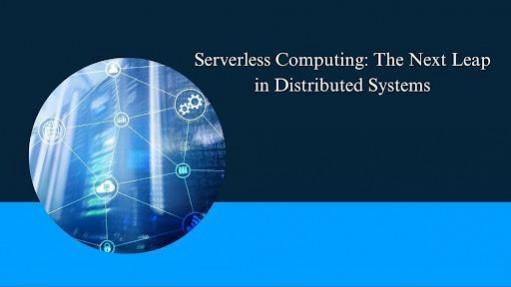
By integrating cutting-edge advancements in cloud infrastructure, serverless computing is redefining distributed systems. Sushant Sood, a seasoned expert in cloud technologies, explores this transformative shift, addressing both its potential and challenges. His research highlights how enterprises are leveraging serverless architectures for efficiency, cost reduction, and scalability.
The Evolution of Serverless Computing
Serverless computing revolutionizes cloud architecture by eliminating infrastructure management, allowing developers to focus on application logic. It follows the evolution from IaaS to PaaS, improving execution speed with a 47% reduction in cold start times since 2019. Python and Node.js dominate, benefiting from optimized function execution and enhanced runtime efficiency.
Optimizing Performance with Intelligent Resource Allocation
One of the defining benefits of serverless computing is its ability to enhance performance through dynamic resource allocation. Empirical research shows that optimized memory configurations can reduce execution costs by up to 43.5% while maintaining consistent performance levels. Increasing memory allocation from 128MB to 1024MB results in an average execution time improvement of 74.6%, demonstrating the impact of efficient resource tuning. This dynamic scaling ensures applications can handle peak loads efficiently without over-provisioning resources.
Addressing Cold Start Latency Challenges
Despite its advantages, serverless computing is not without its challenges, particularly cold start latency. Cold starts occur when a function is invoked after being idle, leading to a delay in execution. Research indicates that cold starts affect 52% of first-time function invocations, with Python functions showing the fastest cold start times at an average of 210-350ms. Java functions, by contrast, experience the highest delays, requiring between 400-900ms for initialization. Solutions such as pre-warmed functions and hybrid models are being explored to mitigate these latency issues.
The Role of Hybrid Architectures
Hybrid serverless architectures are increasingly being adopted to address the limitations of pure serverless environments. These architectures allow organizations to balance workloads between serverless and traditional computing resources, optimizing performance and cost. Research shows that hybrid models reduce cold start latency by 45% and achieve cost savings of up to 60% compared to pure virtual machine deployments. This approach ensures that applications requiring persistent execution or low-latency responses can leverage both models effectively.
Enhancing Security and Reliability
With the rise of distributed serverless applications, security remains a major consideration. The implementation of resilience testing using Chaos Engineering has proven to be a game-changer in ensuring application stability. By simulating controlled failures, organizations leveraging fault injection testing have reported a 47% reduction in production incidents. Additionally, structured logging, access control measures, and automated monitoring further enhance the security of serverless deployments.
Cost-Efficiency in Serverless Deployments
Cost optimization is one of the driving factors behind serverless adoption. Research into cost dynamics reveals that function execution time accounts for 62% of total expenses, with API gateway charges and data transfer fees contributing significantly. Optimizing memory allocation and execution limits can lead to cost reductions of up to 38.2%. Additionally, organizations implementing edge computing integration have reported a 78.4% reduction in network bandwidth consumption, further optimizing operational costs.
The Future of Serverless Computing
The evolution of serverless computing is far from complete. Future advancements will likely focus on improving stateful serverless computing, optimizing latency, and enhancing multi-cloud integration. Research highlights that optimized state management can reduce data access overhead by 65% while improving function execution times by 28%. These enhancements will drive further adoption and innovation across industries.
In conclusion, serverless computing is poised to become an integral part of modern distributed systems. By addressing its challenges and optimizing strategic implementations, businesses can fully harness its potential. Sushant Sood's research underscores the critical role of serverless computing in shaping the future of cloud architecture, ensuring scalable, cost-effective, and resilient applications.

















